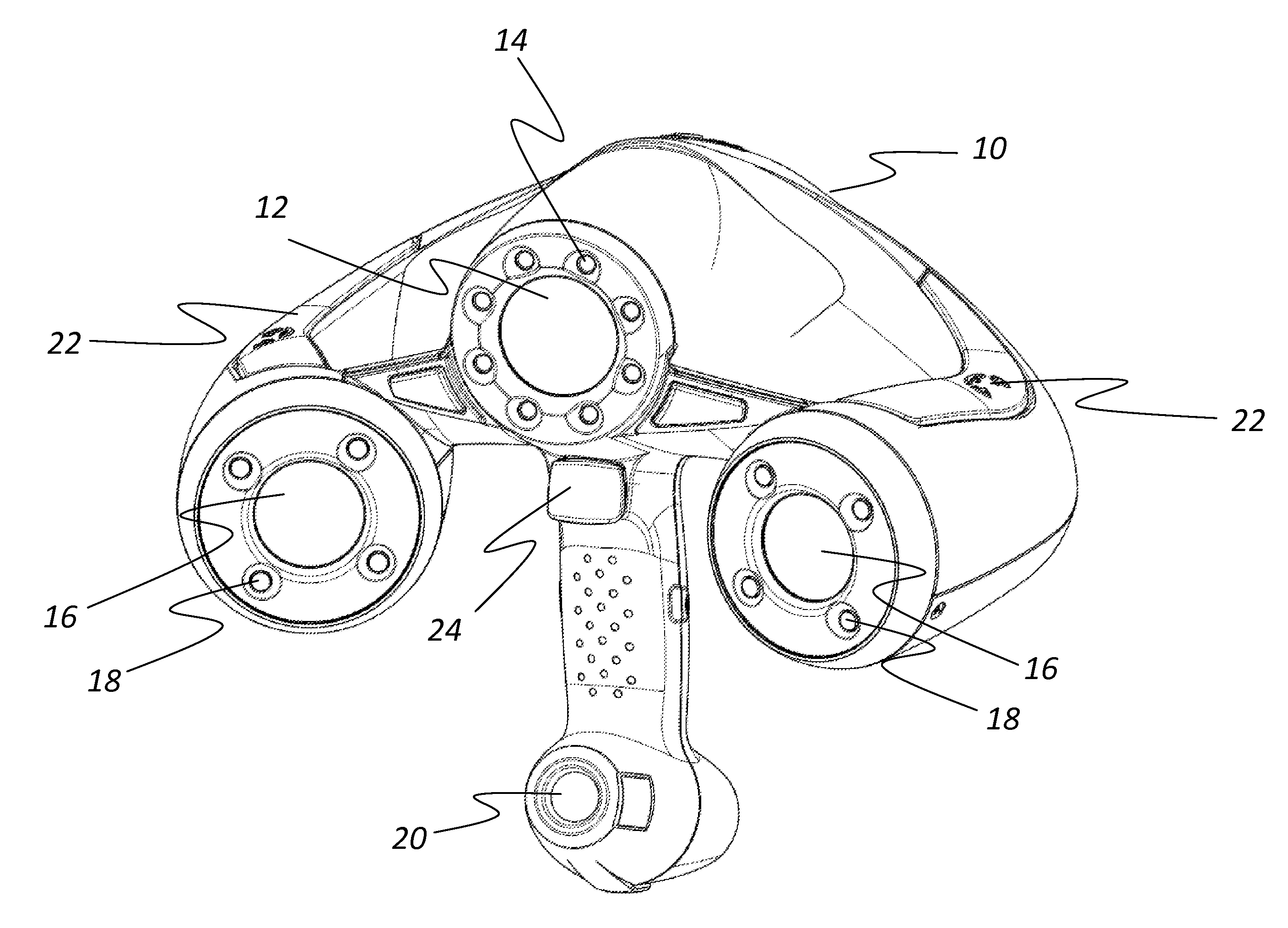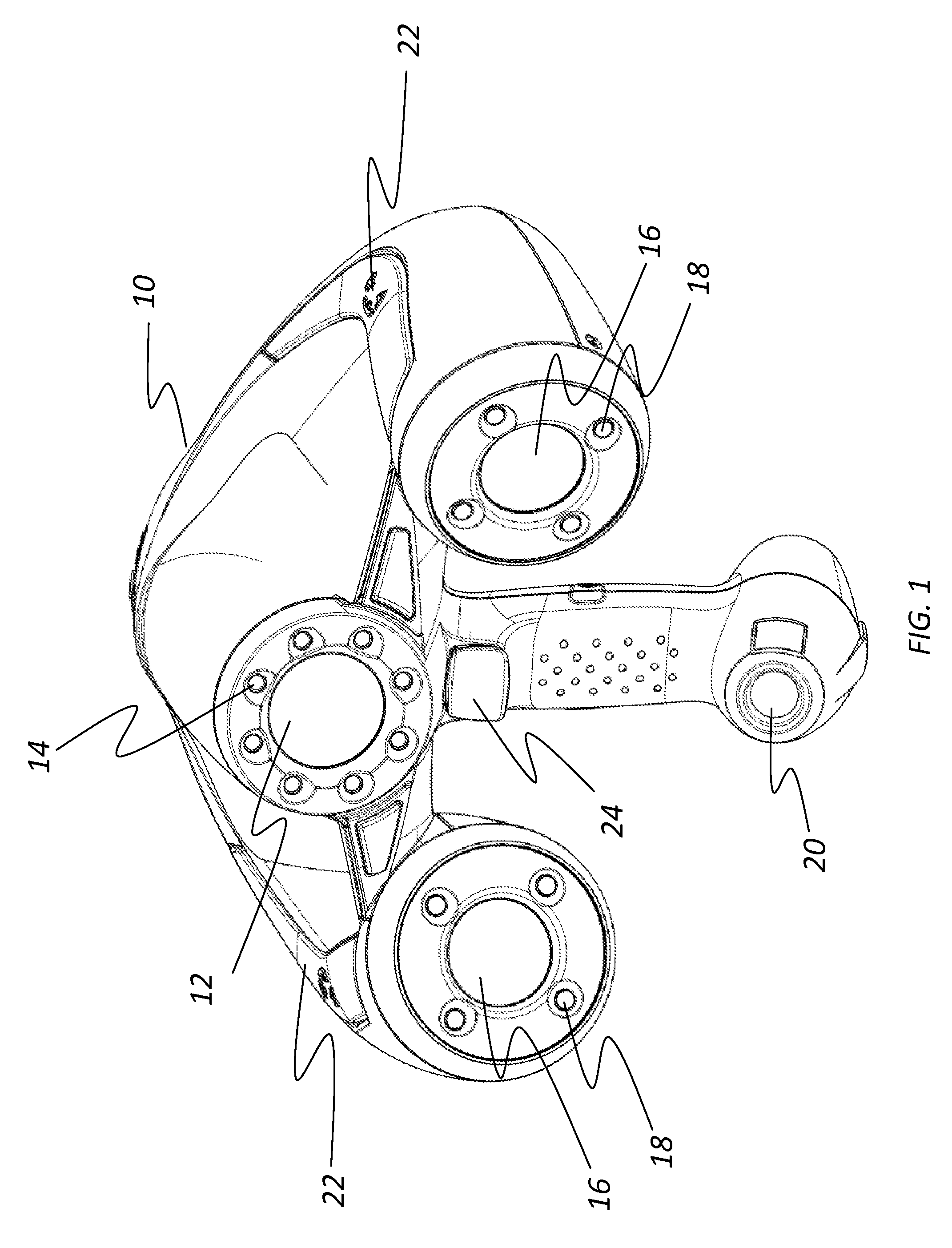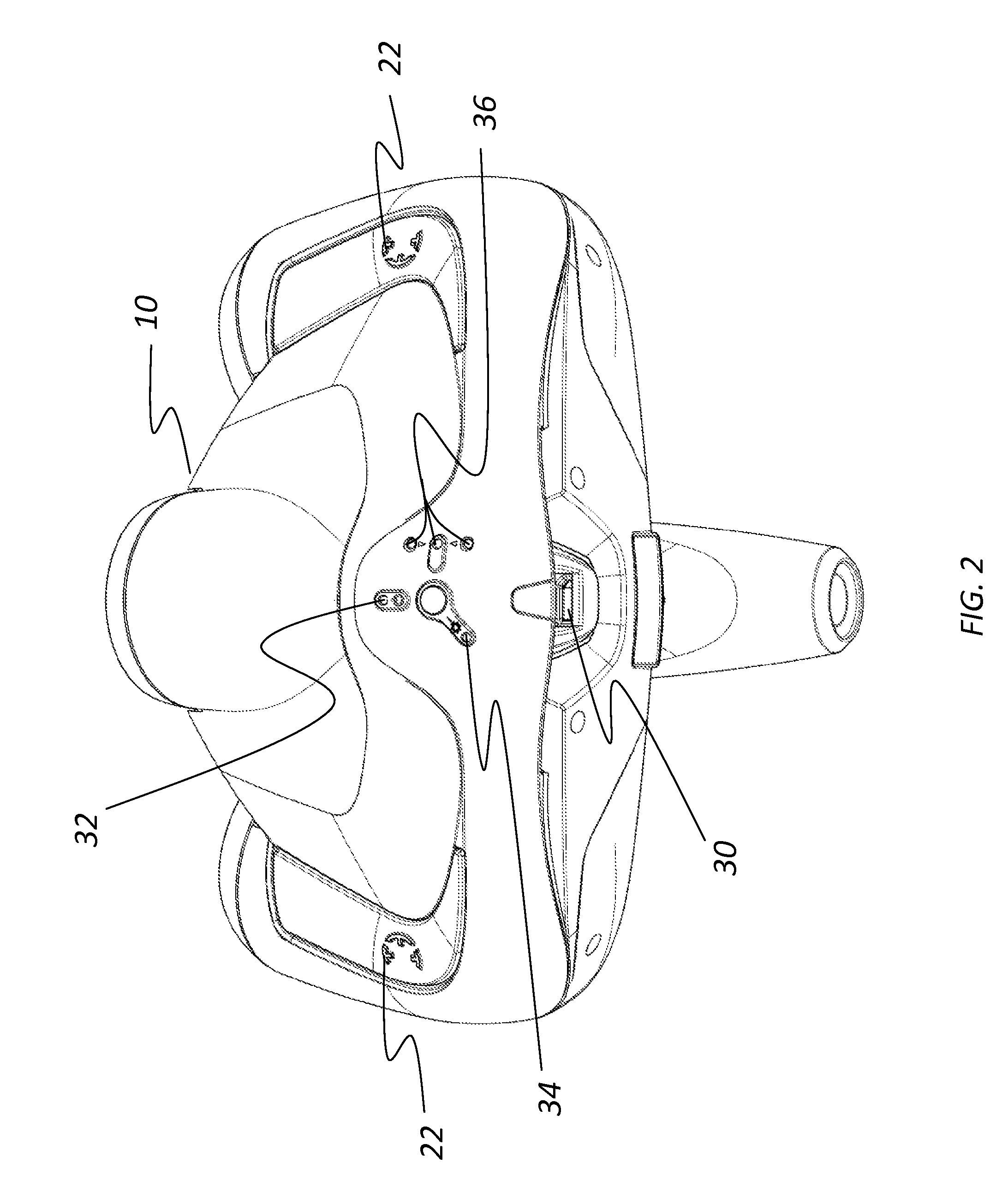Hand-held self-referenced apparatus for three-dimensional scanning
a three-dimensional scanning and self-reference technology, applied in the field of three-dimensional scanning, can solve the problems of not being able to ensure that an accurate estimate of the pose is maintained, noisy enough to limit the quality of integrated data, and using a positioning device significantly increases the complexity and cost of the apparatus
- Summary
- Abstract
- Description
- Claims
- Application Information
AI Technical Summary
Benefits of technology
Problems solved by technology
Method used
Image
Examples
Embodiment Construction
[0027]Referring now to FIG. 1, a 3-D scanning apparatus is generally shown at 10. The 3-D scanning apparatus 10 comprises a set of photogrammetric high-resolution camera with optics and filter 12, hereinafter referred to as photogrammetric camera 12. Different manufacturers of cameras provide cameras with adequate performances (Sony for example). Although there is no restriction on the position of the high-resolution camera, it can, for example, be positioned in the center of the scanning apparatus while aiming forward. The resolution of the high-resolution camera can, for example, exceed two megapixels and the focal length of the optics should be small enough for providing a wide field of view, typically higher than 50 degrees. The optics can be manufactured by Pentax for example. This provides a 1.4 m horizontal field of view at a distance of 1.5 m. The filter is adapted to the light emitting diodes (LEDs) shown at 14. Typically the wavelength is set in the range of red visible sp...
PUM
 Login to View More
Login to View More Abstract
Description
Claims
Application Information
 Login to View More
Login to View More - R&D
- Intellectual Property
- Life Sciences
- Materials
- Tech Scout
- Unparalleled Data Quality
- Higher Quality Content
- 60% Fewer Hallucinations
Browse by: Latest US Patents, China's latest patents, Technical Efficacy Thesaurus, Application Domain, Technology Topic, Popular Technical Reports.
© 2025 PatSnap. All rights reserved.Legal|Privacy policy|Modern Slavery Act Transparency Statement|Sitemap|About US| Contact US: help@patsnap.com



